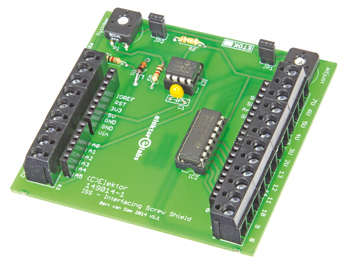IoT Shield for Arduino

This is a MEMBER ONLY article. You need a subscription to read this article.
- Unlimited access to online Member Only articles
- 3 new editions Elektor Magazine (digital)
- More than 5000 Gerber files
- 20% member discount on e-books (at elektor.com)
- 10% member discount on Products (at elektor.com)
Available from €5.33 per month.
What is Members Only
Elektor is committed to providing high-quality content on electronics, catering to tens of thousands of paying members. As part of this commitment, Elektor has launched Premium, an initiative that offers exclusive online articles to members sometimes even before they appear in the magazine.
Every day, members can access in-depth articles that showcase the best of Elektor's premium content.
This initiative aims to reward members with early access. Once logged in, members can easily enjoy this exclusive content and engage in discussions about featured projects. While Premium adds to the existing resources available, Elektor will continue to provide a wealth of free information.
Join the Elektor community today to take advantage of Premium and other benefits!
Component list
Resistors
All 5%, 0.25 W
R1, R3 = 1kOhm
R2 = 100kOhm
P1 = 100kOhm, trimpot, horizontal
P2 = 10kOhm, trimpot, horizontal
Capacitors
C1 = 100nF, 0.2’’ pitch
Semiconductors
D1 = BZX85C, 3.3 V, 1.3 W Zener diode
IC1 = MCP6232
IC2 = ULN2003
Miscellaneous
JP1, JP2 = pinheader, 2-way, 0.1’’ mm pitch
2 pcs jumper for JP1 and JP2
K1,K2,K3,K4,K5,K6,K7 = 3-way PCB screw terminal block, 5 mm pitch
K8, K10 = 8-way stackable pinheader socket, SIL, 0.1’’ mm pitch
K11 = 10-way stackable pin socket, SIL, 0.1’’ mm pitch
IC socket, DIP-8 for IC1
IC socket, DIP-16 for IC2
PCB # 149014-1 v1.1



Discussion (0 comments)